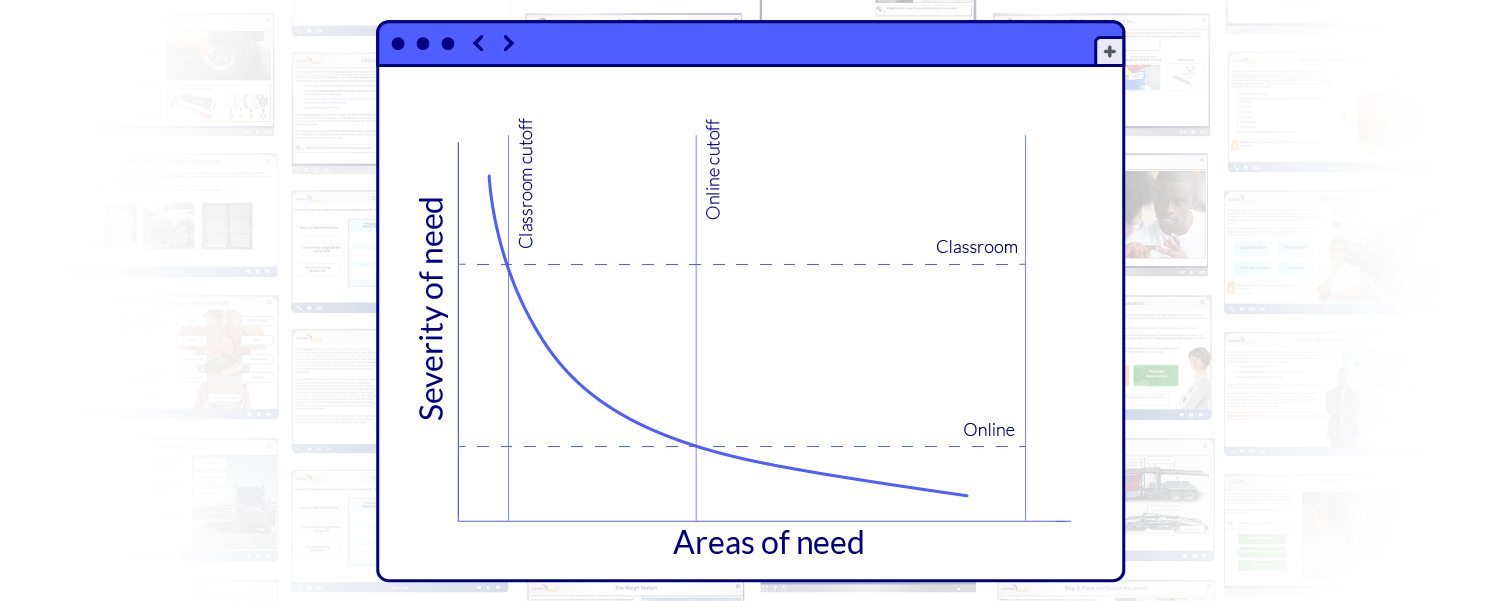
The long tail and training scarcity
Mark Murrell
January 19, 2016
In 2006 Chris Anderson published The Long Tail, a book discussing how the Internet was fundamentally changing the economics of distribution and retail and all the assumptions that went with it. The book is a fantastic eye-opener, and pretty much required reading for anyone starting or building an Internet business, but the lessons apply to other areas as well.
In The Long Tail, Anderson talks about "the tyranny of shelf space" and how it forces retailers to only stock the products that sell in the largest volume. As a result, vendors get a distorted view of what the market really wants. However, when those physical barriers are removed, as is the case with Amazon, iTunes, and other Internet retailers, it turns out that there's a huge appetite for variety and thousands of products in every category that will sell in small quantities. Those small quantities, multiplied by the large selection, equal massive sales numbers. No physical retailer could ever stock that many items, but in the virtual world there's no direct cost to having them available (since they only represent a few bytes in a database and a bit of drive space to store a file), so they reap the benefits.
In the general retail world, long tail economics have been at work for a decade or more, and people have come to expect massive variety. However, in many other places people are just starting to realize that the scarcity is no longer an issue.
The Long Tail in Transportation
Within the transportation industry, driver training is one of those places.
In the old days, where "training drivers" meant pulling them off the road and into class, it was hugely expensive. The business only makes money when drivers are delivering goods, so if they're sitting in class then the business is taking a big hit. Much like the huge cost of shelf space forcing retailers to be picky about what they stocked, the huge cost of delivering classroom training forced fleets to be very picky about what training they delivered. Orientation made the cut, because you had to get people started the right way. Post-incident remedial work also made the cut because insurance and enforcement people demanded it. Required courses (hazmat, fire safety) could be justified as well. Beyond that, though, it was pretty tough to justify much else.
However, just like in the retail world, the old days for fleet training are gone and scarcity is no longer an issue. The Internet, in this case online training, means that training is available anywhere, anytime, with no associated business disruption. Most people I talk to understand that the Internet makes training delivery more convenient and helps to catch the people who couldn't attend a live session, but that's just scratching the surface. Amazon gives me the ability to buy a TV online for the same price as Best Buy and have it shipped to my house, but that's not the real value of Amazon. The real value is the thousands of other products I can get from Amazon that I CAN'T get at Best Buy. Similarly, the real value of online training is not that it makes classroom content available for people who missed the live session, but that it opens up an entirely new world of options that couldn't even be considered in a classroom environment.
More is Better
If training can be delivered without disrupting the business or infringing on the driver's home time, why not do it more often? With the impediments removed, you can do way more training than ever before, without having to limit yourself to just the highest priority items.

While you may still have a prioritized list of possible training subjects, the cut-off for what can reasonably be delivered is much farther down the list than it was before. As a result, more different subjects can be covered, and they can be refreshed more regularly, improving the overall absorption rate.
Smarter fleets are recognizing that and changing their entire delivery model. Instead of killing themselves to schedule only the most critical sessions, they're doing new training every quarter (or every month) online and shifting their in-person activities to more specialized work. The results are invariably positive in terms of fleet safety and overall driver quality but it takes a big shift in mindset to consider it.
As a starting point, it's worth asking yourself a few questions:
- If there were no impediments, how much training would you like your fleet to have, and what things would you like to see covered?
- If you actually delivered all that training, how much safer, more compliant, more effective, and more cohesive would your driving team be?
In the retail world, more products, multiplied by even tiny sales volume in each, leads to huge profits. In the training world, the equation looks similar: more training, multiplied by even low priority subject areas, leads to huge quality and efficiency improvements (and increased profitability as a result).
Let me know what your experience has been.